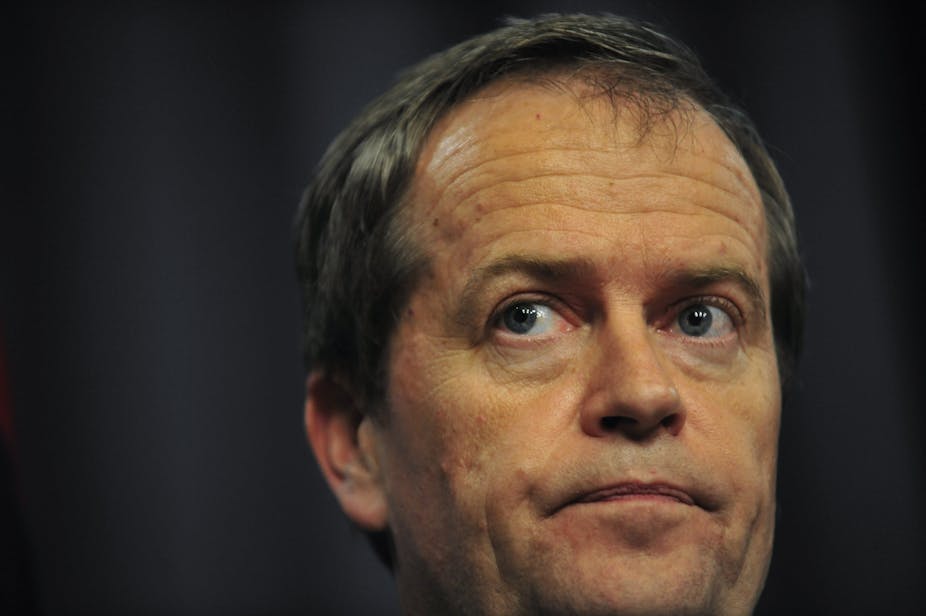Proposed reforms in the Australian Labor Party aim to give members a greater voice in party governance and policy development. This is driven by the need to reverse the party’s shrinking support base after disastrous recent election results and declining membership.
Reform is commonly framed in terms of reducing the role of unions in the party, as their own membership has declined. It is argued this would break down factional control by “union bosses” of candidate pre-selection and of bloc votes at state and federal conferences that determine policy. Under ALP rules, 50% of delegates are union representatives.
Senator John Faulkner is the latest to propose reducing union conference representation. Party reviews have already downgraded the union-party relationship to “partnership” in 2002, and “links” in 2010, alongside “other community organisations”.
When proposing that union membership no longer be required for new party members, federal Labor leader Bill Shorten said:
It used to be said that Labor was the political arm of the union movement. I’m saying today, as proud as I am of unions and what they’ve done, the Labor Party is the political arm of no one but the Australian people.
The ALP has always sought broad appeal to “the people” and must continue to do so for electoral viability. Nevertheless, the unions remain the largest membership-based representative civil institutions in Australia, rivalled only by the number of people who at least occasionally attend religious services. It would be a strategic error for the ALP to distance itself further from unions.
Affiliates are unrepresentative of labour movement
The problem is that unions affiliated to the ALP are unrepresentative of unionism as a whole. Only 11 unions account for all federal Labor parliamentarians with union backgrounds, nine of which are affiliated to the party. Almost half of these 39 MPs come from three affiliates: the Shop Distributive and Allied Industries Union (eight), Transport Workers’ Union (five) and Australian Services Union (five).
The unions that originally affiliated to the ALP in the early 20th century were predominantly blue-collar. However, these unions have declined in significance along with traditional blue-collar jobs.
Most white-collar unions, especially in the public sector, remain unaffiliated. But white-collar and public sector unionism expanded from the 1960s to 1980s. Although contracting after that, public sector union membership is 42% compared with 12% for the private sector. Public sector unions account for 41% of all union members.
The historical unions-ALP relationship suggests ways for improving political mobilisation and participative processes in the ALP by broadening the union base. In each of the Australian colonies where Labor parties originated in the early 1890s, peak union bodies played the initiating role.
In New South Wales and Queensland, where the ALP first became strongly established, the Sydney Trades and Labour Council and the Australasian Labour Federation, respectively, brought a mass base of unions to the party because they broadly represented most unions in their colony.

It is important to note that this political mobilisation was not dependent on high union density. The NSW union membership rate was barely 20% in 1890, although this was comparatively high at the time.
The Australian Council of Trade Unions (ACTU), representing virtually all Australian unions, could play the same role as its 1890s equivalents. The Australian Labor Advisory Council (ALAC), which previously brought Labor and ACTU leaders together for policy discussion, has been dormant for some years; its revival could be an important step in this direction.
Nordic models of engagement
Scandinavian examples suggest further possibilities. Swedish, Norwegian and (until 1995) Danish Labour or Social Democratic party executives have traditionally included peak union leaders. Norwegian party and union leaderships meet weekly in a joint consultative committee. Such measures could develop a policy platform around which the ACTU could mobilise.
When the ALP was formed, individual unions also played a major role at the local level. Unions were largely localised organisations. Early party branches also enjoyed some autonomy. This allowed for a high degree of participatory democracy, but over time both unions and parties became more centralised.
Union affiliation at the central party level could be replaced by affiliation of local union branches or workplace groups at the local ALP branch level. This is similar to the successful Swedish Social Democratic practice.
Affiliation would occur only where local union groups were sufficiently engaged to affiliate. It could be based on substantial work sites, clusters of work sites or residential areas with significant proportions of members from particular unions.
This might require new branches or redrawing of branch boundaries, but the advantages would be twofold: potentially boosting party membership at the branch level; and breaking up central control of union bloc voting at conferences, upon which factions rely.
These restructuring proposals provide opportunity for greater rank-and-file participation at the “grass roots” level, as well as greater coordination with the ACTU, which represents all unions. This would reinvigorate the ALP’s position as a mass party for workers, rather than a party of disconnected “union bosses”.

